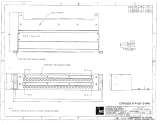
7
■ Message Data for Hybrid Printers......................................................................................77
<type>lock</type>.............................................................................................................................. 77
<type>unlock</type> ......................................................................................................................... 77
<type>print</type> ............................................................................................................................. 78
<type>onxmlresult</type> ................................................................................................................. 78
<type>slipprint</type>........................................................................................................................ 79
<type>slipcancel</type> ................................................................................................................... 79
<type>endorseprint</type>............................................................................................................... 80
<type>endorsecancel</type> .......................................................................................................... 80
<type>micrread</type>..................................................................................................................... 81
<type>micrcleaning</type> .............................................................................................................. 82
<type>micrcancel</type> ................................................................................................................. 82
<type>eject</type>............................................................................................................................ 82
<type>onreceive</type> ................................................................................................................... 83
■ Printer Control XML .............................................................................................................85
<epos-print> ......................................................................................................................................... 85
<response> ........................................................................................................................................... 87
<text> .................................................................................................................................................... 90
<feed>................................................................................................................................................... 96
<image> ............................................................................................................................................... 98
<logo>................................................................................................................................................. 100
<barcode> ......................................................................................................................................... 101
<symbol> ............................................................................................................................................ 105
<hline>................................................................................................................................................. 110
<vline-begin> ..................................................................................................................................... 111
<vline-end>......................................................................................................................................... 112
<page> ............................................................................................................................................... 113
<area> ................................................................................................................................................ 114
<direction> ......................................................................................................................................... 115
<position> ........................................................................................................................................... 116
<line>................................................................................................................................................... 117
<rectangle>........................................................................................................................................ 118
<cut> ................................................................................................................................................... 119
<pulse>................................................................................................................................................ 120
<sound> .............................................................................................................................................. 121
<command> ...................................................................................................................................... 123
<layout> .............................................................................................................................................. 124
<recovery> ......................................................................................................................................... 127
<reset> ................................................................................................................................................ 127
■ Message Data for the Customer Display........................................................................128
<type>display</type>....................................................................................................................... 128
<type>onxmlresult</type> ............................................................................................................... 129
■ Customer Display Control XML........................................................................................130
<epos-display>................................................................................................................................... 130
<response> ......................................................................................................................................... 131
<window> ........................................................................................................................................... 132
<text> .................................................................................................................................................. 134
<cursor> .............................................................................................................................................. 135
<blink>................................................................................................................................................. 136
<brightness> ....................................................................................................................................... 137
<marquee>......................................................................................................................................... 138
<clock> ............................................................................................................................................... 139
<clear>................................................................................................................................................ 139
<reset> ................................................................................................................................................ 139
<command> ...................................................................................................................................... 139






















